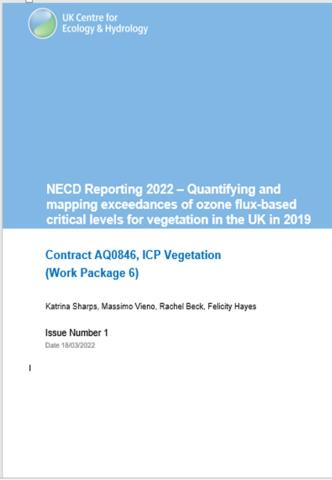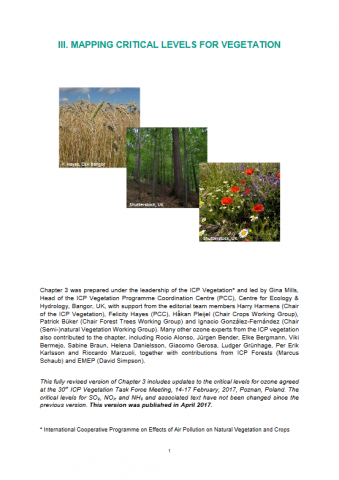Bibliography
.
2018. Closing the global ozone yield gap: Quantification and co-benefits for multi-stress tolerance.. Global Change Biology. (Not yet assigned to an issue)
.
2018. Current surface ozone concentrations significantly decrease wheat growth, yield and quality.
.
2018. Ozone pollution will compromise efforts to increase global wheat production.. Global Change Biology. 24:3560-3574.
.
2018. Tropospheric Ozone Assessment Report: Present-day tropospheric ozone distribution and trends relevant to vegetation.. Elementa: Science of the Anthropocene. 6(1):47.
.
2018. Wheat yield responses to stomatal uptake of ozone: Peak vs rising background ozone conditions.. Atmospheric Environment. 173:1-5.
.
2016. 2015/2016.
.
2016. Ozone impacts on vegetation in a nitrogen enriched and changing climate. Environmental Pollution. 208:898-908.
.
2015. Climate change and reactive nitrogen as modifiers of vegetation responses to ozone pollution.
.
2015. Heavy metal and nitrogen concentrations in mosses are declining across Europe whilst some "hotspots" remain in 2010. Environmental Pollution. 200:93-104.
.
2015. Twenty Eight Years of Icp Vegetation: An Overview of Its Activities. Annali Di Botanica. 5:31-43.
.
2014. Have ozone effects on carbon sequestration been overestimated? A new biomass response function for wheat Biogeosciences. 11:4521-4528.
.
2014. Mapping correlations between nitrogen concentrations in atmospheric deposition and mosses for natural landscapes in Europe. Ecological Indicators. 36:563-571.
 ]
] 
